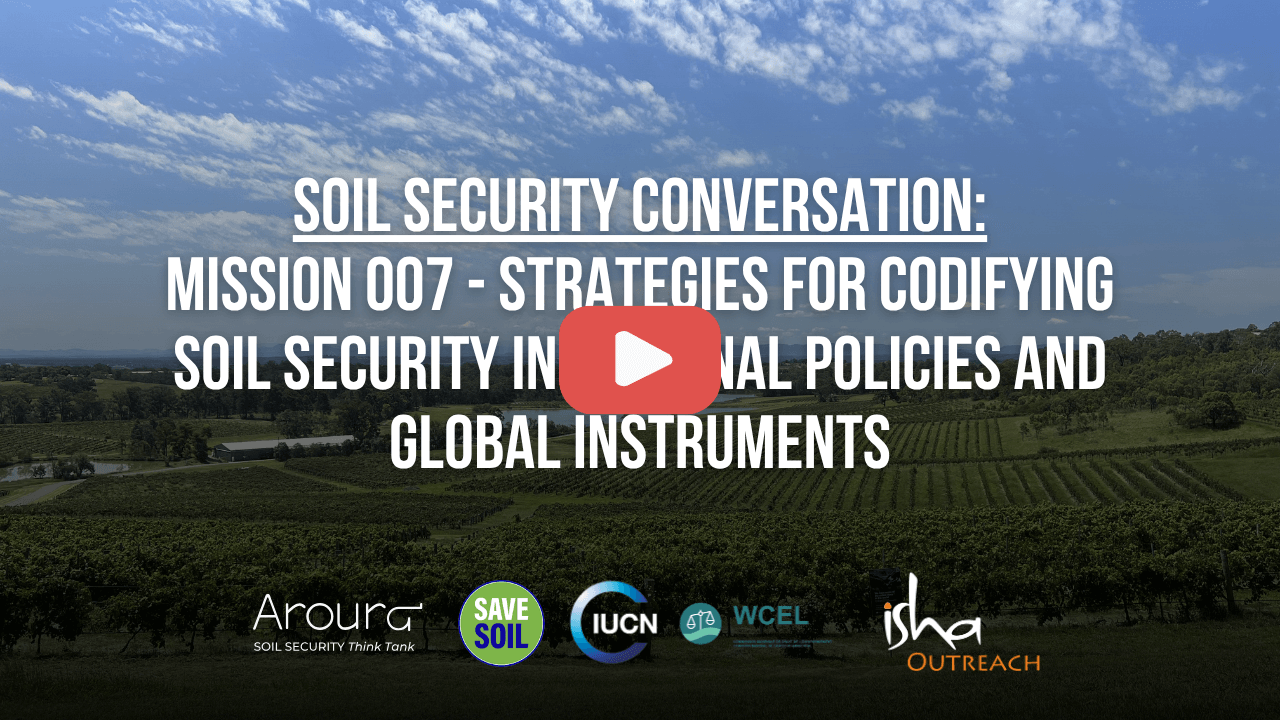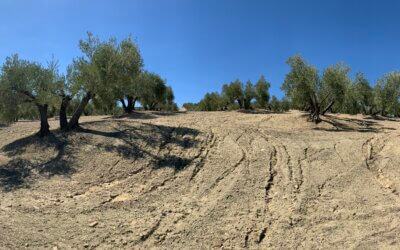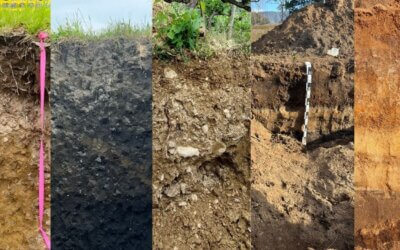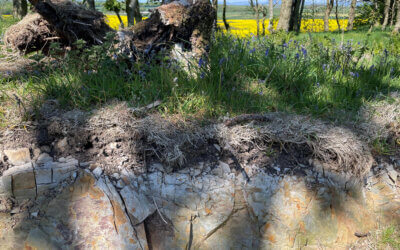Strategising National Soil Security
A Soil-Centric Vision
For the past decade and a little more, we have been developing the concept of Soil Security. Like many transformative ideas, it has taken time to mature, but momentum is now building. What I want to share here is a framework that is unapologetically soil-centric.
If we are serious about securing soil for the future, we must look at it not merely as a resource that serves other interests, but as a foundation in its own right.
Every nation must take this soil-centric view, adapting it to its own circumstances.
The question I pose is simple: if you were a country, how would you design a soil security strategy? To answer this, we must consider the necessary policies and actions. What I suggest here is a work in progress—research underway both at The University of Sydney and within our think tank, Aroura. A formal discussion paper will follow, but here I want to share the principles already taking shape.
The Framework of Soil Security
Our framework rests on five dimensions of soil security. Two—capacity and condition—address the biophysical aspects. Condition aligns with what many call soil health, but we prefer the term “condition” because it cannot be understood apart from capacity.
Not all soils have the same potential, and low-producing soils may still be in excellent condition; their role in the ecosystem is simply different.
Beyond these, we have capital, which encompasses economic value; connectivity, which speaks to the relationship between soil and humanity; and codification, which covers governance, policy, and law. Together, these dimensions must be addressed holistically. Soil cannot be considered secure if any one is neglected.
Globally, the urgency is clear. Soil degradation—through erosion, carbon loss, sealing, or the impacts of climate change—costs an estimated 2–3% of global GDP ($2-3 trillion) each year. Roughly 20% of soils are severely degraded, and another 30% moderately so. If nations are to reverse this trend, they must adopt long-term, integrated strategies.
Goals and Principles
We suggest a 20-year horizon: long enough to allow institutional development, policy reform, and measurable improvement. It could be shorter. The goals are ambitious yet essential: to sustainably manage soil resources; to build resilient soil ecosystems; to optimise the delivery of soil services; to eliminate net degradation; to integrate soil security into all relevant policies; and to strengthen human, institutional, and technical capacity.
Measurable targets might include, for example, a 75% improvement in soil condition indicators, a 60% increase in ecosystem service provision, and the establishment of durable institutional frameworks.
Policy Domains and Implementation
From these principles arise five core domains:
1. Integrated Monitoring Networks – to establish reference states, track change, and provide transparent reporting.
2. Land-Use and Planning Frameworks – to align spatial planning with soil capacity, condition, and value, protecting high-value soils and requiring soil assessments for major projects.
3. Valuation and Incentives for Soil Services – to recognise the economic value of soil’s contributions and reward stewardship through payments, tax instruments, and verified outcome schemes.
4. Threat Prevention and Restoration – to prevent erosion, compaction, and other threats, while funding the recovery of severely degraded soils.
5. Governance and Capacity Building – to empower landholders, integrate indigenous and local knowledge, ensure independent advice, and share methods through open platforms.
These policies are interdependent: no single one will succeed in isolation. Implementation will unfold in phases—first establishing institutions and monitoring systems, then scaling up restoration and conservation, integrating soil security across all policy domains, and finally ensuring long-term sustainability.
Conclusion: Global Alignment and the Case for Action
National strategies must also be aligned with broader frameworks—linking agricultural, environmental, climate, and urban policy domestically, and cooperating regionally and globally through the Sustainable Development Goals, the Convention on Biological Diversity and the Convention to Combat Desertification, and ideally, through a dedicated international agreement on soil security.
The case for action is compelling. Soil security underpins environmental resilience, economic stability, and social wellbeing.
If we act now, we can secure the soil not only for our generation, but for generations to come.
If you would like to learn more about soil security, you can rewatch the recent webinar co-organised by Aroura and the Conscious Planet – Save Soil Movement on Soil Security.

by Alex McBratney
Professor of Digital Agriculture & Soil Science ARC Laureate Fellow
Alex McBratney holds BSc, PhD and DSc degrees in soil science from the University of Aberdeen in Scotland, and the DScAgr degree from the University of Sydney for research in precision agriculture. He has made major contributions to soil science and agriculture through the development of the concepts of Pedometrics, Digital Soil Mapping and Precision Agriculture.
Related Articles
When We Fail to Secure Our Soil: Lessons from Europe’s Olive Groves
Landscapes Losing Their Foundation More than two millennia ago, Plato lamented the barren hills of Greece, stripped of their fertile soil. His warning still echoes across southern Europe, where centuries of cultivation have left landscapes increasingly exposed. Across...
One size does not fit all: Recognising Pedodiversity
Pedodiversity: The Hidden Variation Beneath Our Feet Just as the concept ‘biodiversity’ reflects the natural variation among individuals within a species, so does the concept ‘pedodiversity’ reflects the variation among soil. Soil is both one entity- yet is found in...
How Soil Security Can Prevent Future Crises
The Ground Beneath Our Feet Is Disappearing Every bite of food we eat, every drop of clean water we drink, and every breath of oxygen we take depends—often invisibly—on one of Earth’s most overlooked resources: soil. Yet across the globe, soil is being lost, degraded,...




